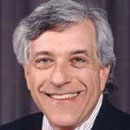The swiveling menorah has come around to teach a lesson
For every journey there is a symbol that marks the journey. For Dorothy and the Lion and the Tin Man and the Scarecrow, the symbol was the Yellow Brick Road. For Christianity, the symbol is the cross. For Islam, the symbol is the crescent. What is the symbol for the Jewish journey? You might guess that the ultimate Jewish symbol is the Star of David. It is, after all, the centerpiece of the Israeli flag. However, the Star of David has a problem: It did not become a Jewish symbol until the 12th century and was actually used in Christian churches as a decorative motif many centuries before its first known use in any synagogue. In fact, the Star of David was originally a Muslim symbol based on the magical ring worn by King Solomon called the Khatam Sulaiman.
However, Judaism does have another symbol that is deeply symbolic and deeply Jewish from its origins 3,000 years ago. It is the menorah that stood in the ancient Temple (not the Hanukkah menorah). According to Steven Fine in his new book, "The Lamp of Zion" the menorah is, "the longest continuously used religious symbol in Western culture."
The Temple menorah remained in Jerusalem until the Roman conquest in the year 70 CE. Then it was taken to Rome. The record of its transport to Rome was immortalized in the Arch of Titus that still stands near the Coliseum.
My teacher, Rabbi Nelson Glueck, taught me that he believed that the three branches of the menorah actually swiveled around the center post. "Why would they swivel?," I asked him. "That is for you to figure out," he replied. This sermon is for Nelson, because finally after 50 years I figured it out.
The key to understanding the swiveling menorah is a Talmudic teaching of Rav Shmuel bar Nahmani in Berachot 55 BCE. He taught, ein mar'in lo l'adam ela meharhorei libo, which means, "We do not see things as they are, we see things as we are." It means that we never truly see things objectively. We see the world through the lenses of our preexisting prejudices. Now this teaching applies to the menorah because how we see the menorah depends upon how we choose to view it -- face-on or edge-on. If we view the menorah face-on, we see each of the seven lights as distinct and separate. Edge-on we see just one single brighter light. That is the choice with the menorah. That is the choice for Judaism, for ourselves, and for America.
Jews have been united and also divided during our 4,000-year history. It is time now for us to be united. And to view the Jewish journey edge-on, with the branches swiveled so that we only see a single brighter light.
What is true about swiveling the branches of the menorah to get a single Jewish light in the world is also true and necessary for each of us to get a single light in our own lives.
Do you know the difference between a face-on view of your life and an edge-on view of your life? The difference is the kind of questions you ask. Who is right? is a face-on question. Who is kind? is an edge-on question. What do I want? is a face-on question. What do I need? is an edge-on question. What did I earn today? is a face-on question. What did I learn today? is an edge-on question. I have always believed that we will not be judged by God for our answers. I believe we will be judged by our questions.
The lesson of the swiveling menorah for Jews and for our families is also the lesson for America. America is a divided light right now, and if our tragically divided country is to survive it must learn to swivel the branches of America's menorah now. We are a pluribus in search of an unum. Our identity politics has left us without a clear and defining national identity. Our branches are separated and have lost a sense of connection with our fellow citizenry.
There must be a way for us to make the fact that we are all Americans more important than the ways we are divided from each other in America. Our political opponents can be wrong, but if they are not just wrong but also totally evil then there is no possibility for dialogue and no chance for a bipartisan discovery of the things we all agree on.
As we read in Psalm 119:105, "Thy word is a lamp unto my feet, and a light unto my path." The lights we kindle are God's law of justice and compassion as we read in Proverbs 6:23, "For the commandment is a lamp; and the law is light."
(Send ALL QUESTIONS AND COMMENTS to The God Squad via email at godsquadquestion@aol.com. Rabbi Gellman is the author of several books, including "Religion for Dummies," co-written with Fr. Tom Hartman.)
(c) 2018 THE GOD SQUAD DISTRIBUTED BY TRIBUNE MEDIA SERVICES, INC.






